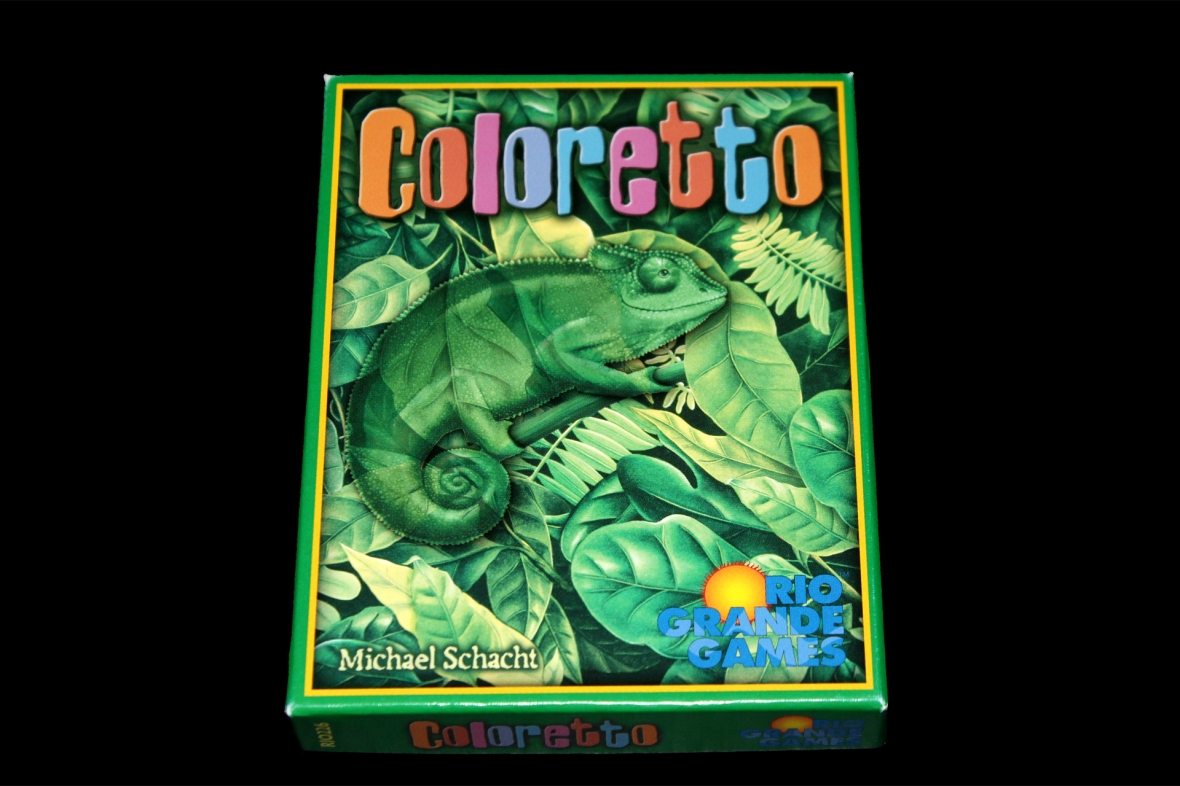
Base price: $15.
2 – 5 players.
Play time: ~20-30 minutes.
BGG Link
Buy on Amazon (via What’s Eric Playing?)
For the first time in a while, I’m covering another small-box light game (in the same sort of class as No Thanks!, Hanabi, and Saboteur). This one in particular was shown to me at my friend Netters’ place for a game day (check her out on YouTube!), so, shoutout.
In Coloretto, you’re … honestly, I have no idea if there’s any lore around this, so, just work with me. Maybe it’s the Chameleon Festival? And you want to collect some chameleons but not … all … of them? Yeah, I’ve got nothing, here.
Anyways. It’s a drafting / set-collection game (similar to, say, Lanterns‘ lantern-collection mechanic); let’s talk more about it.
Contents
Setup
So, you’ll immediately notice that you’ve got oodles (that’s a technical term) of colorful chameleons (nine each of seven different colors, to be precise):
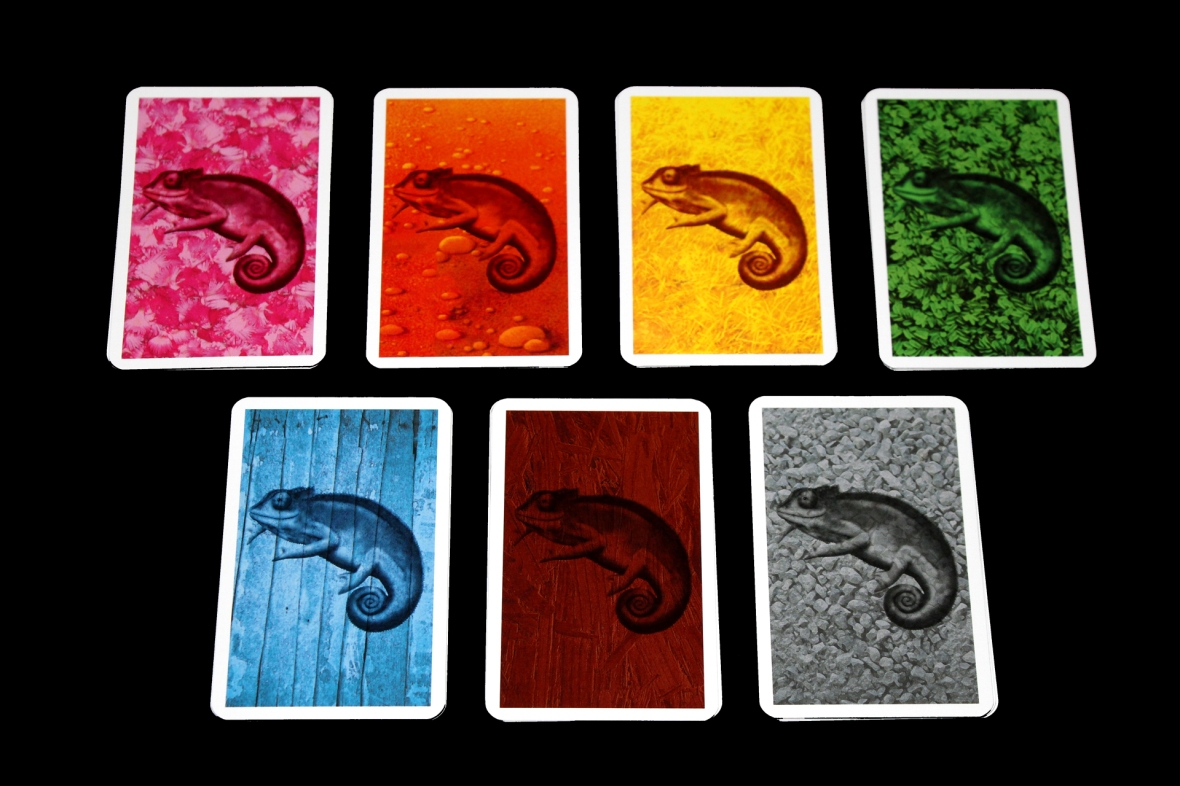
If you are playing with three players, remove one of the color sets from the game. If you are playing with two players, remove two of these color sets from the game. You’ll also have some cards with a +2 on them, and some wild cards:
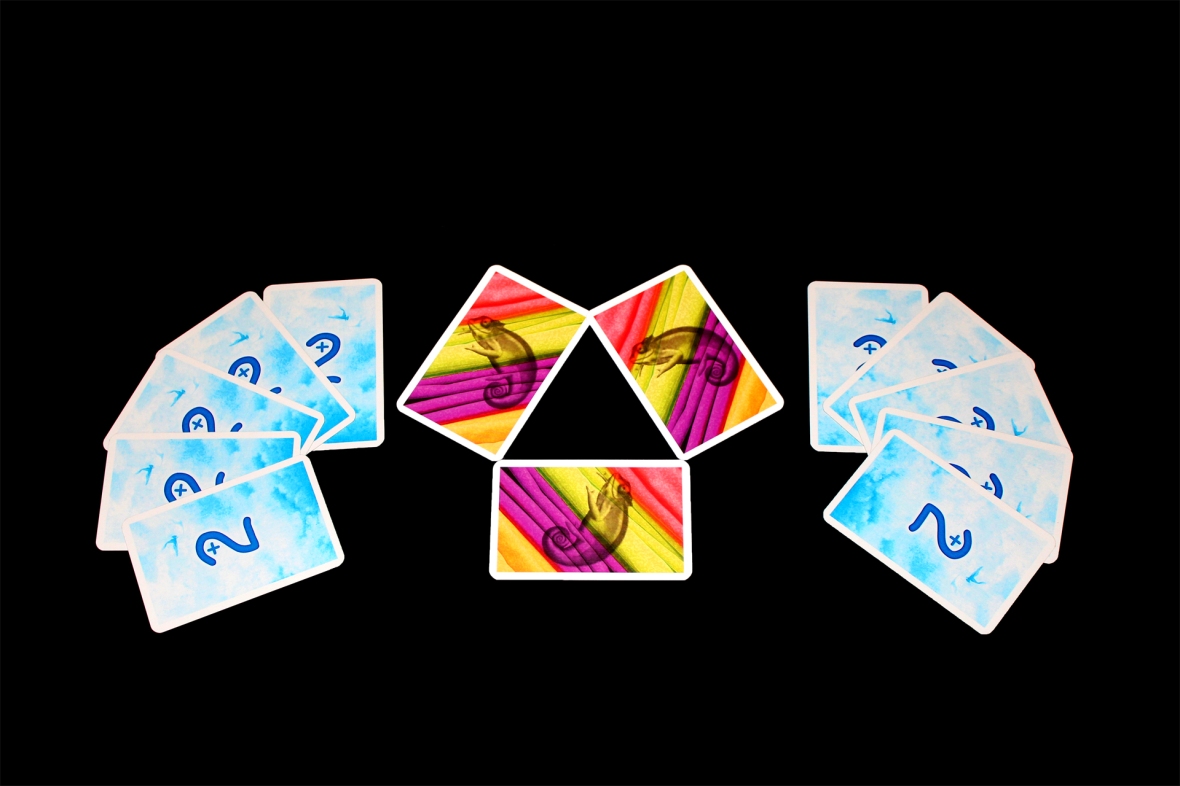
Give each player one chameleon in a (different) color of their choice, then shuffle the Chameleon deck, including the +2s and wilds.
Next, you’ll notice these cards:


Use the left set for two-player games, and the right set for three+-player games. These are row cards, so set out one row card for each player (or all three green cards in a two-player game) in the center of the table, where all players can reach it.
You’ll also notice these scoring cards (double-sided):
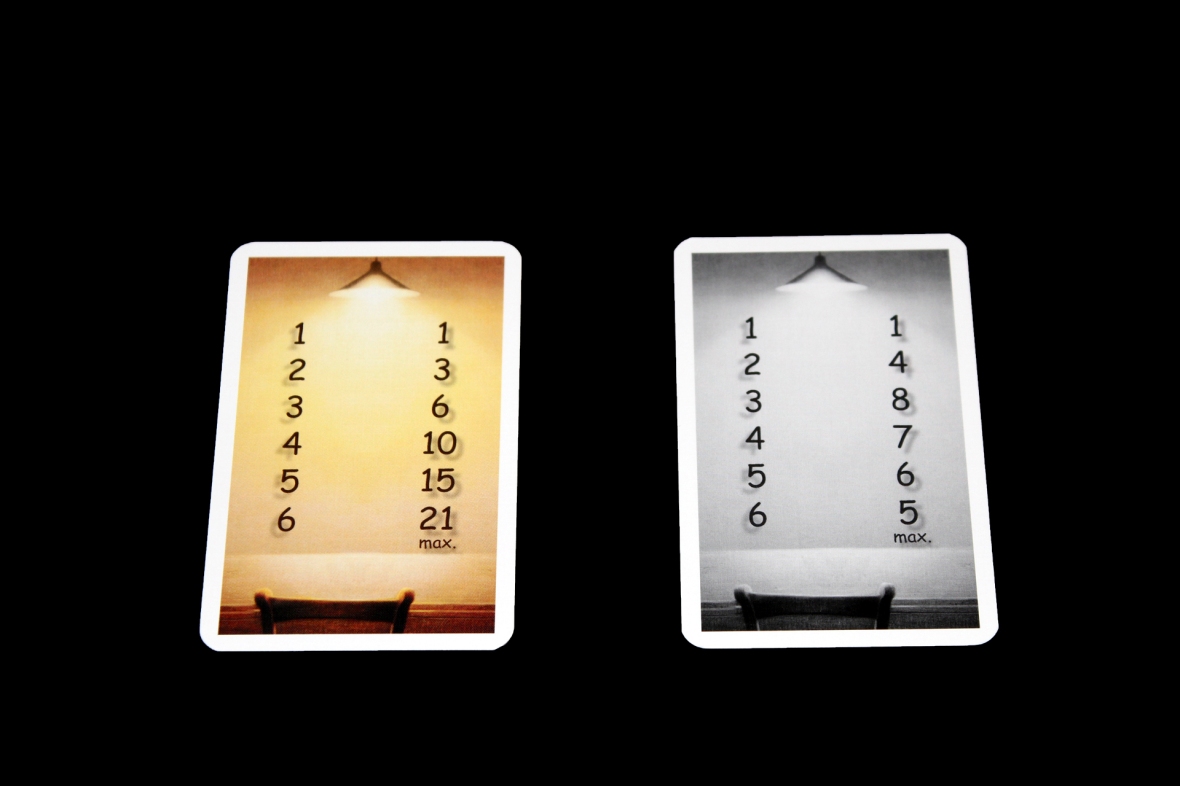
I’ll call them Gold and Silver (respectively) for the rest of this review.
Choose a side (I personally prefer the right side, but it’s a bit more difficult to play, as you might guess from the scoring scheme). All players will use the same side in-game, for obvious reasons.
Finally, you’ll see a “Last Round” card:
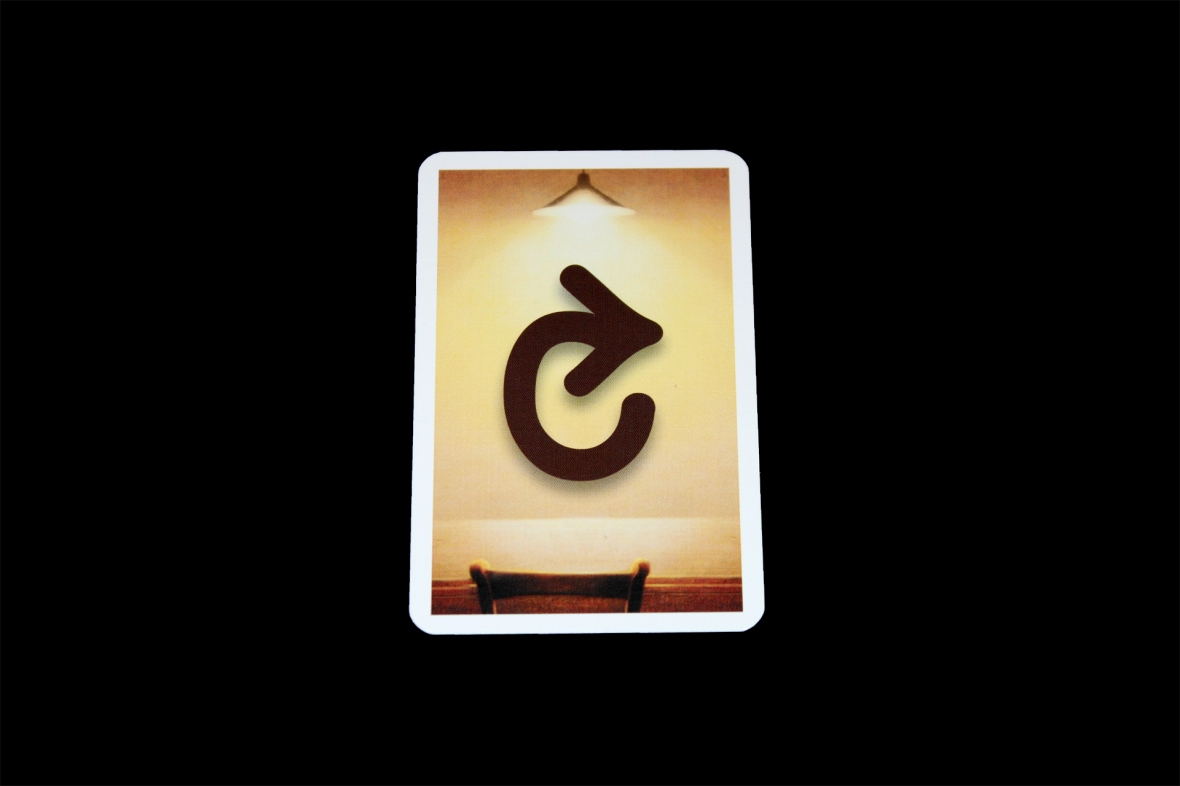
Count off the bottom 15 cards of the deck, and set this on top. Set the other cards in the deck on top. This is how you’ll know that the game is about to end.
Once you’re ready to play, your set up area should look like this:
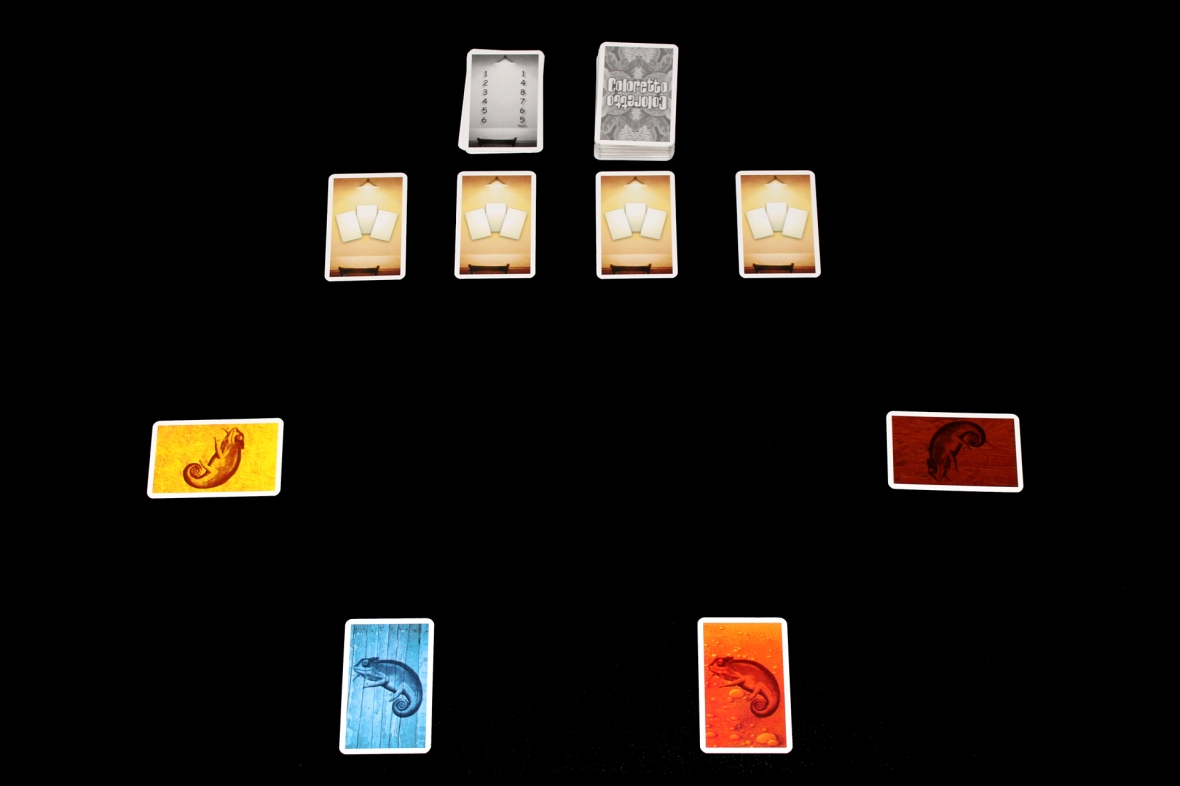
Gameplay
So, gameplay is pretty straightforward to play, but difficult to master. Here’s the simple part: on your turn, you can do one of two actions:
- Draw a card and place it in any row, provided it does not currently have the pictured number of cards in it. (Usually three cards, but might be less in two-player games.) You also cannot place cards in a row that another player has already taken cards from.
- Take a card / set of cards from a row and add it to your taken cards in front of you.
That’s pretty much it. If you take cards, I find it helpful to flip over the row card to indicate to other players that they can’t place cards there. Also note that the cards you’ve taken are public, and other players should be able to see them.
Once all players have taken a row of cards, the round ends. The last player to take a row starts the next round.
If, when drawing a card, you reveal the Last Round card below it, the current round is the final round of the game. You continue the round until it ends (hence the 15 cards below the Last Round card), but once that’s done you tally scores.
The scoring is probably the most interesting part of the game, in my opinion. As you remember from the scoring cards:

You earn points for the number of cards of each color you have in your collection. However, only three of those sets score positively. This means that the other 2-4 (depending on player count) sets will score negative points. So if you were to have, say, 3 Blues; 3 Yellows; 3 Oranges; and 3 Greens, and you’re playing on the silver scoring scheme, you’d only score 16 points (8 + 8 + 8 – 8). Tough break! As you might imagine, the +2 points cards are worth +2 points regardless of sets. You can also move wild cards around to sets at any point in the game, so you can use it to make a positive set better or to potentially take fewer negative points.
The player with the most points wins!
Player Count Differences
Again, at two players you’re playing basically a different variant of Coloretto, since only one row will get three cards. I actually like it a lot at two, since one row gets discarded out of the game and it feels like a good two-player strategic game.
At three+, it’s fun as well, but you will have fewer chances to snatch good rows as the player count increases, since there will be more people taking turns before you. To compensate, you’ll have more options in rows, so it probably balances out? I don’t dislike Coloretto at any player count.
Just remember to remove two colors from the game at two players and one color at three players, and to use the correct number of row cards.
Strategy
I’ll try to mark these if I think they apply more in Gold or Silver scoring schemes.
- Be cognizant of what your opponents want. If you can, try to make sure they can only take cards they want if they’re also willing to take on cards that they don’t want. Generally, that’s useful strategy in most games, but it’s fairly critical, here, since that can either force them to take negative points (helping you) or force them to make risky decisions around taking cards.
- If you can’t get a good row, make sure that nobody can. Generally, a row of three cards that are all different colors is terrible, unless you need those exact three cards. Try to add cards so that your opponents get stuck with either making garbage choices or giving you good options.
- I find that wilds are a bit better for Gold games than Silver games. Generally, they’re pretty good, but again, since taking extra cards isn’t great in Silver games, you’re going to want to try to finish the game with as few cards as possible, so the flexibility of wilds isn’t terribly helpful. They’re not bad to take, since they can be any color, but they’re not as good as they are in Gold games, in my opinion.
- (Silver) You really don’t want to take a lot of cards. If you see an opponent drop a +2 into its own row, unless you need another card, just take that and end the round.
- (Silver) The sweet spot is three cards. I know it says it on the card, but I’d like to reiterate it, here. You should shoot for that, but approach it slowly rather than trying to start with getting three cards for a row, since it’s highly likely you’ll have to take cards you might not want during this game.
- (Silver) It’s slightly better to take a fourth or fifth card than it is to start a negative-scoring color row, in my opinion. Generally it just means that every card you add to that set is now worth -1 point, but if you start a new negative-scoring color row you might get unlucky and take that -8.
- (Silver) Try not to put +2s into their own row, unless you’d be helping your opponents more by adding them to an existing row. With the silver scoring scheme you really want to be selective about the cards you take since the scores are so much lower by default. That said, if you have a row with a yellow card and your opponent needs a yellow, better to make them choose between the two cards than to give them both.
- (Gold) Go as deep as you can on card colors. You really want that 21, so try to take as many of a color as you can, though be warned that your opponents are going to try to block you or take the cards you want. Thankfully, there are nine of each, so you might be able to make it work in smaller games.
- (Gold) Try to avoid going for the color cards that your opponents started with unless you’re trying to block them. There are only eight of those available and you know you’re gonna have to fight someone for them, so it might be a bit easier to just ignore them and go for the one you started with, until your opponents try to make sure you can’t get them.
Pros, Mehs, and Cons
Pros
- Colorful. Make it fun to photograph, and it’s very eye-catching, similar to Beth Sobel’s retheme of The Game or Mottainai or Dingo’s Dreams. I’m not enamored with the art scheme, personally (not bad, just not like, really my favorite thing), but I really appreciate the bold colors.
- Super easy to teach. I taught some people this the other evening in about 5-10 minutes. Generally, the fun in teaching this to a new group is letting them figure out the nuances of scoring on their own, especially if you start them in a Silver game rather than a Gold one.
- Short and simple, but interesting. I think the push-your-luck elements make this a fun game to play and to watch, even though it’s relatively short. Generally, a great filler before games or between games.
- I like the different scoring schemes. I think they make for very different games (Silver’s also a bit more cutthroat), which is awesome. Definitely adds variety. There are also a fair number of expansion modules if you want to add even more to your game.
Mehs
- Not, like, amazingly deep. But it’s a filler game, so who cares? It’s not trying to be.
- I think the 10th Anniversary Edition has better art. Whoops, but I bought this one. Oh well better luck next time. I may still pick it up for photography reasons.
- If you’re playing an experienced player, your first game can be pretty tough. There’s a fair bit of nuance to how you want to play & take cards, and you learn a lot of that through experience. I don’t think that’s a terrible thing, but it’s definitely something to watch out for. Generally, I only call this a “con” because that’s not an issue I find in many games.
Cons
- Similar to Splendor, where you sit can affect the game. I haven’t found that this happens a ton in my games, but it is possible for another player to accidentally “help” you or an opponent via a misplay, so the potential for inadvertent (or intentional, I guess) kingmaking is there.
Overall: 9 / 10
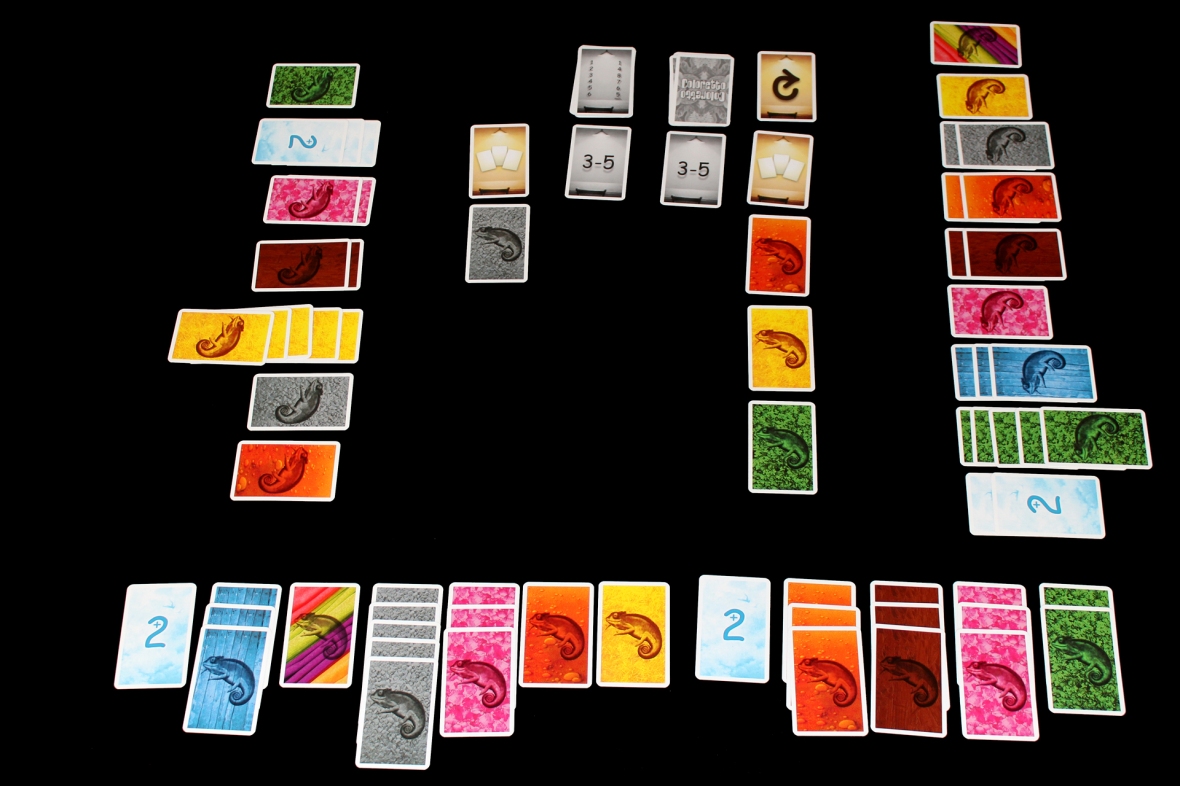
As far as light filler games go, Coloretto is one of the better ones out there, in my opinion. For a game with only two actions (play a card or take cards), it’s got a lot of variety since it also depends a fair bit on the people you play with. It also has fair bit of player interaction, as you’re directly interfering with other players’ abilities to score, but it doesn’t feel too personal or too aggressive. Generally, I take this with me most places and I’ve enjoyed it a lot ever since I first played it. I’d highly recommend giving it a look!